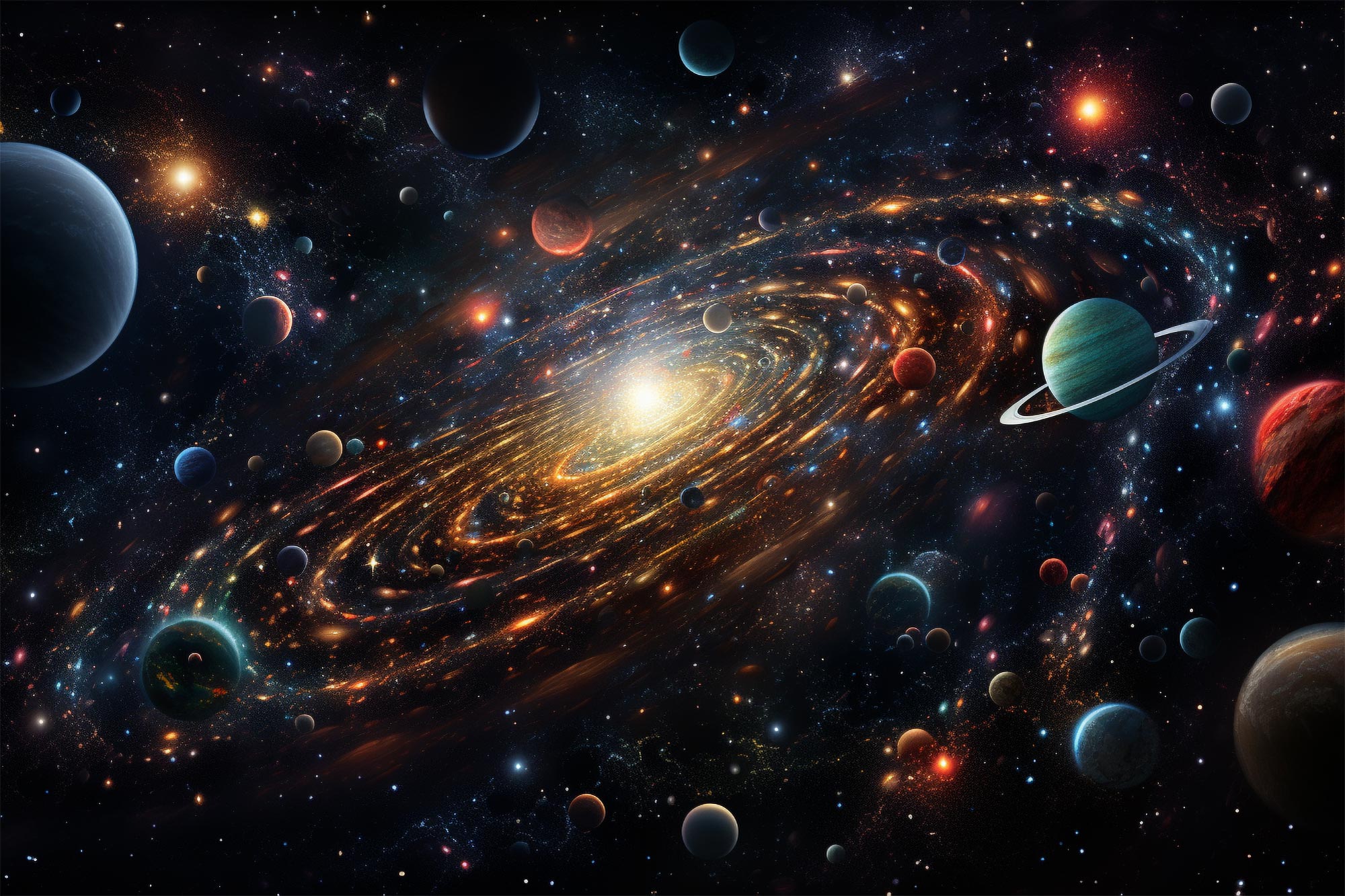

أصدر تلسكوب جيمس ويب الفضائي التابع لناسا تصوراً ثلاثي الأبعاد يعرض ما يقرب من 5000 مجرة ، بما في ذلك مجرة مايسي ، إحدى أقدم المجرات ، والتي تشكلت 390 مليون سنة بعد الانفجار العظيم. توضح هذه الملاحظة المهمة قدرات ويب المتقدمة في التصوير ، مما يسمح للباحثين باستكشاف أجزاء غير مرئية سابقًا من الكون وطرح أسئلة جديدة حول تشكل النجوم في هذه المجرات المبكرة.
تُظهر البيانات قدرة ويب Webb على تصوير وتحديد آلاف المجرات في وقت واحد.
أصدر مكتب التوعية العامة التابع لمعهد علوم تلسكوب الفضاء تصورًا علميًا جديدًا للبيانات من مسح CEERS (علم النشر المبكر للتطور الكوني). يمثل الفيديو استكشاف ويب للمنطقة المعروفة باسم Extended Groth Strip ، ويكشف عن العديد من المجرات التي لم يسبق رؤيتها من قبل. يعرض ثروة من المجرات عبر الكون ويختتم بمجرة مايسي ، التي تقع على بعد 13.4 مليار سنة ضوئية من الأرض.
https://www.youtube.com/watch؟v=-VNZsAeYt0c
يصور هذا التصور ثلاثي الأبعاد حوالي 5000 مجرة ضمن جزء صغير من مسح CEERS (التطور الكوني لعلم الإطلاق المبكر) ، والذي جمع البيانات من منطقة تعرف باسم Extended Groth Strip. نظرًا لأن الكاميرا تبتعد عن وجهة نظرنا ، فإن كل ثانية تساوي 200 مليون سنة ضوئية في مجموعة البيانات ، ورؤية 200 مليون سنة أخرى في الماضي. تتغير مظاهر المجرات ، مما يعكس حقيقة أن الأجسام البعيدة شوهدت في أوقات سابقة في الكون ، عندما كانت المجرات أقل تطورًا. ينتهي الفيديو في Maisie’s Galaxy ، والتي تشكلت بعد 390 مليون سنة فقط بعد الانفجار العظيم ، أو قبل حوالي 13.4 مليار سنة.
يسلط التصور ثلاثي الأبعاد الجديد الضوء على 5000 مجرة كشف عنها تلسكوب ويب الفضائي
هذا الفيديو ، تصور علمي للمجرات التي تم التقاطها كجزء من CEERS مسح (علم الإطلاق المبكر للتطور الكوني) ، يعرض مهمة كبيرة من قبل[{” attribute=””>NASA’s James Webb Space Telescope. It flies by thousands of galaxies, starting with those nearby and ending with less-developed galaxies in the very distant universe, including one never seen before Webb.
The area highlighted in this visualization is a small part of the Extended Groth Strip, a region between the Ursa Major and Boötes constellations originally observed by the Hubble Space Telescope between 2004 and 2005. While this vast region contains about 100,000 galaxies, the visualization focuses on approximately 5,000 – with the nearest and more complex galaxies, shown in the beginning, located within a few billion light-years of Earth. As the visualization proceeds, showing galaxies farther away from Earth, we see different stages of the universe’s history and evolution.

Extended Groth Strip. Credit: NASA, ESA, M. Davis (University of California, Berkeley), and A. Koekemoer (STScI)
The visualization’s farthest galaxy, known as Maisie’s Galaxy, is a target of great interest to astronomers. It formed about 390 million years after the big bang, or about 13.4 billion years ago. It’s not only one of the first bright, extremely distant galaxies found by Webb, but it’s also an example of an early galaxy that only Webb could see. This is because Webb’s instruments can capture the light from these early galaxies, which has been shifted to infrared wavelengths by the expansion of the universe.
“This observatory just opens up this entire period of time for us to study,” said Rebecca Larson of the Rochester Institute of Technology in Rochester, New York, one of the survey’s investigators. “We couldn’t study galaxies like Maisie’s before because we couldn’t see them. Now, not only are we able to find them in our images, we’re able to find out what they’re made of and if they differ from the galaxies that we see close by.”
Steven Finkelstein of the University of Texas at Austin, principal investigator of the CEERS program, continued, “This observation exceeded our expectations. The sheer number of galaxies that we’re finding in the early universe is at the upper end of all predictions.” The observatory’s ability to conduct surveys like these provides a demonstration of Webb’s instruments for astronomers to reference for future observations.
This visualization not only shows just how far Webb can observe, but also how much it builds off the accomplishments of Hubble. In many cases, Hubble’s observations, along with Webb’s data from the CEERS Survey, enabled researchers to determine which galaxies were truly far away – the early-universe galaxies of interest – and which were nearby, but so dusty that their visible light was obscured.
With these observations, the next goal for researchers is to learn about the formation of stars in these early galaxies.
“We’re used to thinking of galaxies as smoothly growing,” Finkelstein remarked. “But maybe these stars are forming like firecrackers. Are these galaxies forming more stars than expected? Are the stars they’re making more massive than we expect? These data have given us the information to ask these questions. Now, we need more data to get those answers.”
The James Webb Space Telescope is the world’s premier space science observatory. Webb is solving mysteries in our solar system, looking beyond to distant worlds around other stars, and probing the mysterious structures and origins of our universe and our place in it. Webb is an international program led by NASA with its partners, ESA (European Space Agency) and the Canadian Space Agency.

“متعطش للطعام. طالب. متحمس محترف للزومبي. مبشر شغوف بالإنترنت.”





More Stories
صاروخ فالكون 9 التابع لشركة سبيس إكس يتوقف قبل إطلاقه ملياردير في مهمة خاصة
بقرة بحرية ما قبل التاريخ أكلها تمساح وسمكة قرش، بحسب حفريات
إدارة الطيران الفيدرالية تطلب التحقيق في فشل هبوط صاروخ فالكون 9 التابع لشركة سبيس إكس